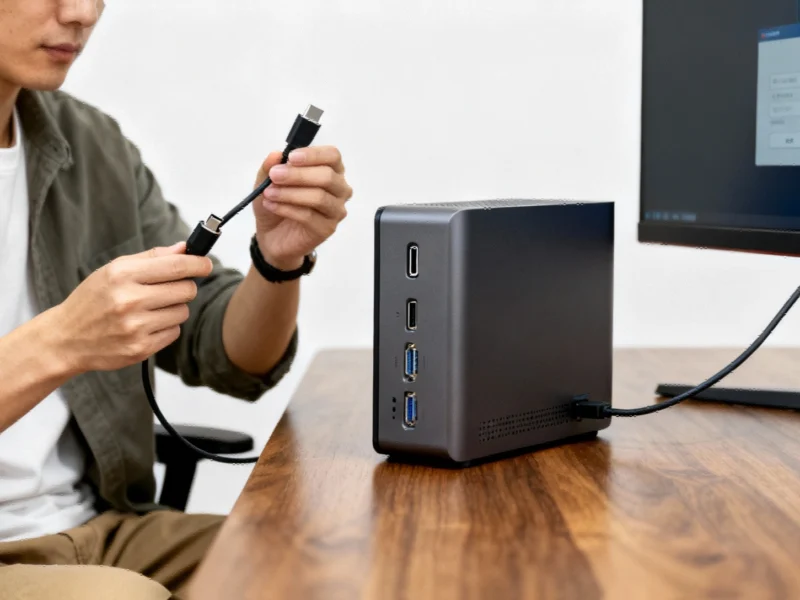Google’s Architectural Evolution: From x86 Monoculture to Arm and x86 Coexistence
In a groundbreaking infrastructure shift, Google has successfully integrated Arm-based Axion processors alongside traditional x86 architecture within its production environment. This multi-architecture approach represents one of the most significant computing transitions in modern cloud infrastructure, demonstrating how large-scale enterprises can evolve beyond single-architecture dependencies while maintaining service reliability and performance., according to recent innovations
Table of Contents
- Google’s Architectural Evolution: From x86 Monoculture to Arm and x86 Coexistence
- The Migration Blueprint: Analyzing 38,156 Code Commits
- Overcoming Real-World Migration Challenges
- From Manual Migration to Automated Scaling
- Advanced Tooling: Sanitizers, Fuzzers, and Health Monitoring
- CogniPort: The AI-Powered Migration Accelerator
- Implications for Industrial and Manufacturing Technology
The Migration Blueprint: Analyzing 38,156 Code Commits
Google researchers undertook a massive analysis of 38,156 commits to their unified Google3 repository to understand the scope of changes required for this architectural transition. This monorepo approach, which stores code for multiple projects in a single version-controlled repository, provided unprecedented visibility into the migration challenges and solutions. The comprehensive commit analysis revealed patterns that would inform their migration strategy and help anticipate potential bottlenecks.
The initial focus centered on critical database services including F1, Spanner, and Bigtable, which form the backbone of Google’s data infrastructure. Researchers employed standard software engineering practices for the initial porting process, expecting significant architectural hurdles. However, they discovered that modern compiler technologies and sanitizer tools handled many architectural differences—such as performance variations and platform-specific operations—more effectively than anticipated.
Overcoming Real-World Migration Challenges
The migration team identified several key areas requiring focused attention during the transition. Test overfitting emerged as a primary concern, where tests specifically optimized for x86 architecture failed to perform adequately on Arm hardware. This required substantial test suite revisions to ensure compatibility across both architectures., according to technology insights
Additional challenges included:, according to technology trends
- Build and release system updates for legacy high-traffic services that hadn’t undergone significant architectural changes in years
- Production configuration resolution to ensure seamless operation across different hardware platforms
- Stability preservation through careful monitoring and rollback protocols
From Manual Migration to Automated Scaling
The migration began with manual porting of approximately a dozen applications to Arm architecture, running them successfully on Google’s Borg cluster management system. This proof of concept demonstrated feasibility but highlighted the impracticality of manually migrating Google’s remaining 100,000-plus applications., according to recent innovations
Automation became the cornerstone of their scaling strategy. The engineering team deployed large-scale change tools that sharded master changes into manageable pieces, enabling more efficient code review processes and faster implementation. This approach allowed them to shepherd large groups of commits through the review pipeline without overwhelming their development resources.
Advanced Tooling: Sanitizers, Fuzzers, and Health Monitoring
Google implemented sophisticated testing methodologies to ensure architectural compatibility. Sanitizers and fuzzers played a crucial role in identifying execution differences between x86 and Arm architectures, catching potential issues before they manifested in production environments.
Continuous health monitoring systems provided real-time feedback on application performance across both architectures. Jobs exhibiting problems such as repeated crashing or degraded throughput on Arm were automatically identified and pulled from production for offline debugging and optimization. This proactive approach minimized service disruption and maintained overall system reliability throughout the migration process.
CogniPort: The AI-Powered Migration Accelerator
The most innovative aspect of Google’s migration strategy was the development of CogniPort, an AI-based tool designed to automate the remaining migration tasks. This intelligent system addresses complex migration challenges including:
- Automated resolution of build failures for Arm-specific libraries and binaries
- Intelligent test failure diagnosis and correction
- Architecture-specific dependency resolution
- Performance optimization across different hardware platforms
CogniPort represents a significant advancement in enterprise migration tooling, demonstrating how artificial intelligence can accelerate complex infrastructure transitions while reducing manual engineering effort.
Implications for Industrial and Manufacturing Technology
Google’s multi-architecture success story carries significant implications for the industrial technology sector. As manufacturing environments increasingly rely on heterogeneous computing architectures for different workloads—from real-time control systems to data analytics platforms—the ability to seamlessly operate across multiple architectures becomes increasingly valuable.
Factory technology deployments can learn from Google’s approach to:, as previous analysis
- Gradual architectural transitions that maintain operational continuity
- Automated testing and monitoring across different computing platforms
- AI-assisted migration tools for complex software ecosystems
- Unified repository management for better visibility and control
This multi-architecture approach enables industrial organizations to select optimal hardware for specific manufacturing workloads while maintaining software consistency and reducing vendor lock-in. As edge computing and specialized processors become more prevalent in industrial settings, the lessons from Google’s migration provide a valuable blueprint for future-proofing manufacturing technology infrastructure.
Related Articles You May Find Interesting
- Google’s Axion Arm Processors Power Multi-Architecture Infrastructure Transforma
- China’s EV Market Faces Overcapacity Crisis as Price War Intensifies, Industry L
- U.S. Government Eyes Strategic Investments in Quantum Computing Sector
- IoT Middleware Market Set to Quadruple by 2032 as Industrial Connectivity Demand
- Tesla’s Q3 Earnings Reveal a Costly Conundrum: Revenue Gains Overshadowed by Soa
This article aggregates information from publicly available sources. All trademarks and copyrights belong to their respective owners.
Note: Featured image is for illustrative purposes only and does not represent any specific product, service, or entity mentioned in this article.



